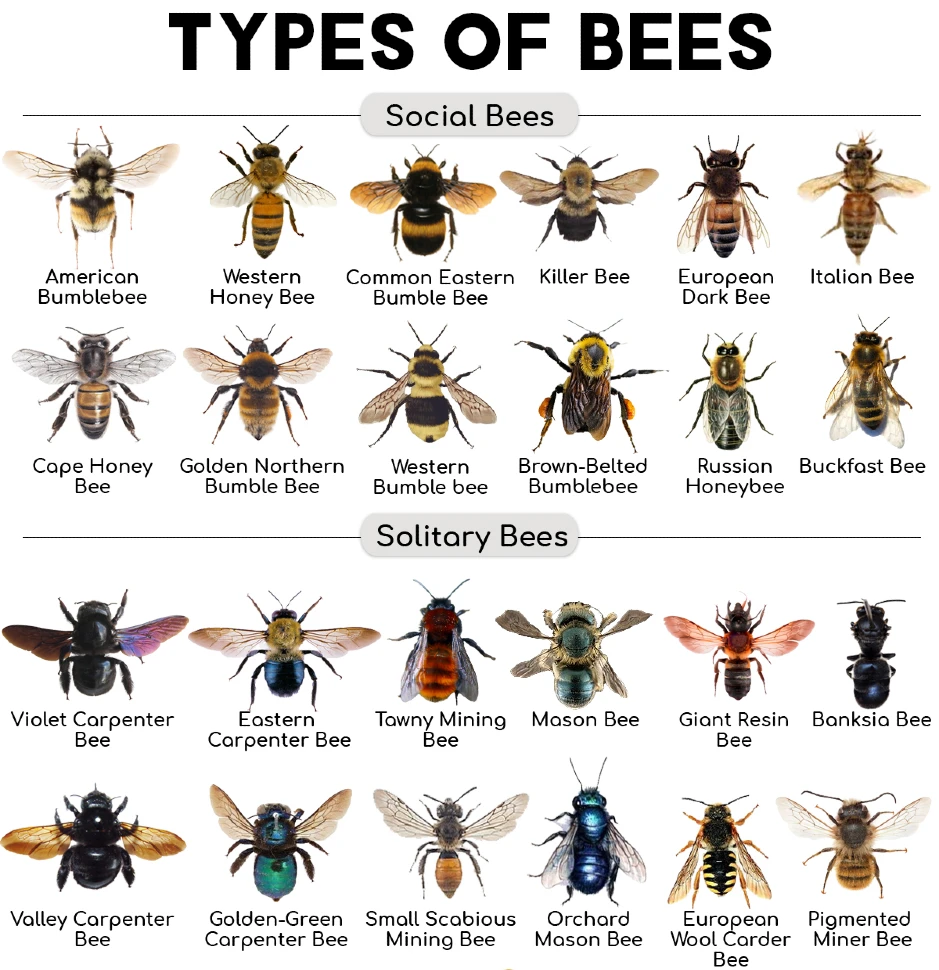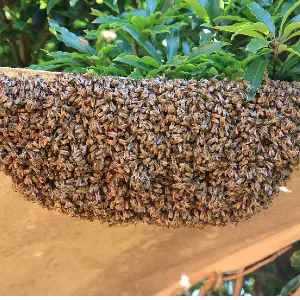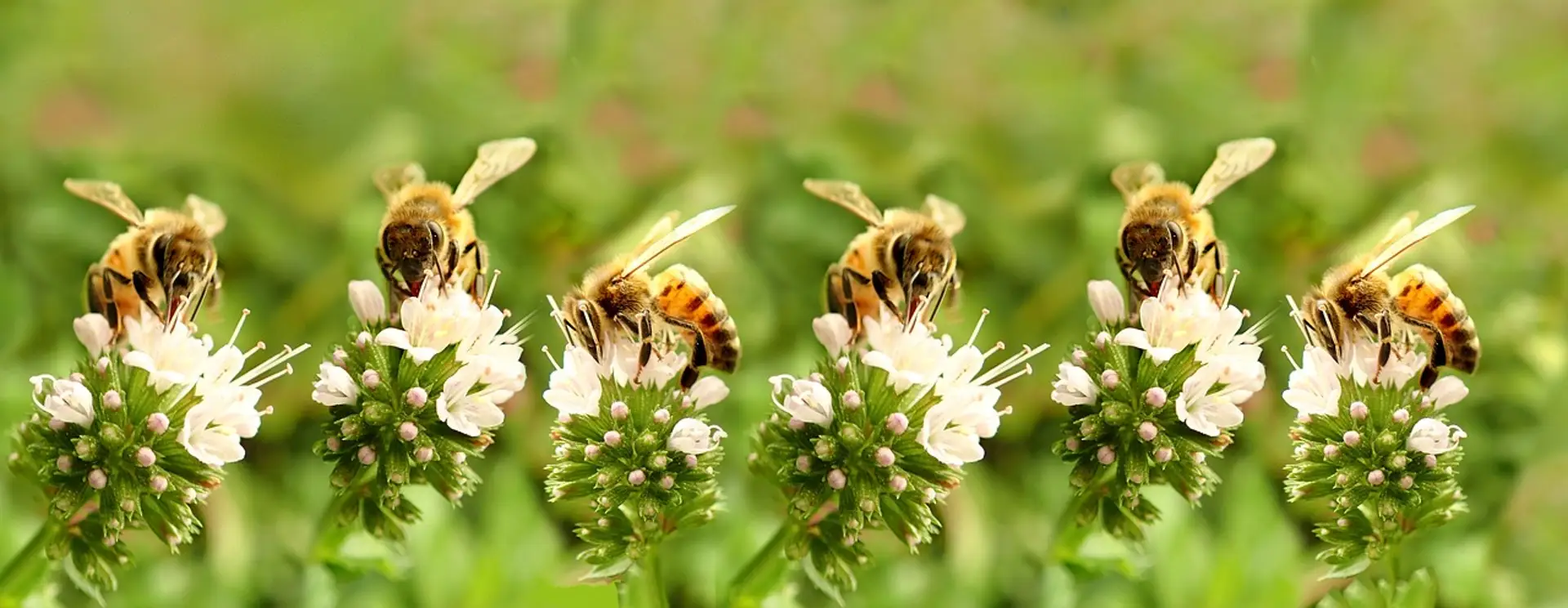
Introduction
Bees, the Guardians of Our Ecosystem, are essential flying insects closely related to wasps and ants. Renowned for their crucial role in pollination and the production of honey and beeswax, bees are integral to maintaining biodiversity. They belong to the superfamily Apoidea and the clade Anthophilia, with over 16,000 known species spread across seven biological families. These diverse and ubiquitous insects are found in nearly every environment except Antarctica.
In this comprehensive exploration, we delve into the fascinating world of bees, covering their physical characteristics, behaviour, ecological significance, and ongoing conservation efforts. Learn why bees are vital to our planet and what we can do to protect these indispensable Guardians of Our Ecosystem.
Physical Characteristics
Size and Appearance
Bees exhibit remarkable diversity in size and appearance. The smallest bee, the dwarf bee (Trigona minima), measures a mere 2.1 mm in length, whereas the largest, Mega Chile Pluto, can reach up to 39 mm. Bodies are divided into three parts: the head, thorax, and abdomen. They typically possess two pairs of wings, though some species have wings too small for flight. Compound eyes, simple eyes (ocelli), and antennae are essential for sensing their surroundings. Their fuzzy bodies are an adaptation for carrying pollen.
Legs and Wings
With six legs, bees are well-equipped for their foraging tasks. The hind legs often have structures like pollen baskets (corbicula) used to collect and transport pollen. Their veined wings vary in size and shape across different species, facilitating their vital role in pollination.
Behaviour and Ecology
Habitat
Bees are versatile in their habitat preferences, thriving in environments such as gardens, woodlands, meadows, and agricultural fields. They are distributed across every continent except Antarctica, showcasing their adaptability and ecological significance.
Diet
Nectar and pollen form the primary diet of bees. Nectar provides carbohydrates, while pollen supplies proteins and other essential nutrients. This diet is vital for their survival and reproductive success.
Pollination
As vital pollinators, bees serve as the guardians of our ecosystem, playing a crucial role in the reproduction of many flowering plants. During foraging, they transfer pollen from one flower to another, enabling fertilization and the production of fruits and seeds. Some bees are specialized pollinators for specific plants, while others are generalists, significantly contributing to biodiversity and ecosystem health.
Bees Social Structure
Honeybees and bumblebees are highly social, living in complex colonies with a division of labour. In contrast, solitary, leafcutter and mason bees do not form colonies. Each female typically creates and provisions her own nest. Eusocial bees, such as honeybees, have a caste system consisting of queens, workers, and drones. The queen’s primary role is reproduction, workers maintain the hive and forage, and drones mate with queens.

Nesting
Bee nests are found in diverse locations, including underground (bumblebees), in trees or buildings (honeybees), or in hollow plant stems (mason bees). These nests are constructed from materials like wax (produced by honeybees), mud, leaves, or resin, showcasing their remarkable adaptability and resourcefulness.
Reproduction
Bee reproduction typically involves a queen or a solitary female laying eggs. In social species, the queen mates with drones and lays fertilized eggs that develop into workers or new queens, and unfertilized eggs that develop into drones. The Solitary Bee would typically lay their eggs in individual cells, each provisioned with food.
Bee reproduction typically involves a queen or a solitary female laying eggs. In social species, the queen mates with drones and lays fertilized eggs that develop into workers or new queens, and unfertilized eggs that develop into drones. The Solitary Bee would typically lay their eggs in individual cells, each provisioned with food.
Development
Bee development includes several stages: egg, larva, pupa, and adult. The duration of each stage varies by species and environmental conditions. Larvae are typically fed by adults until they pupate and eventually emerge as adults, ready to contribute to their colony or start their own.
Bees are the Guardians of Our Ecosystem
Pollination Services
Bees, as the Guardians of Our Ecosystem, contribute significantly to the pollination of numerous crops and wild plants, making them essential for food production and biodiversity. They are responsible for pollinating fruits, vegetables, nuts, and seeds, thereby influencing the global food supply and ensuring the health of ecosystems.
Products
Bees produce honey, beeswax, propolis, and royal jelly, which have diverse uses in food, cosmetics, and medicine. These products are valuable both economically and nutritionally, underscoring the multifaceted importance of Apoidea and clade Anthophilia as the Guardians of Our Ecosystem.
Conservation of Bees
Challenges Facing Bees
Bee populations face numerous threats, including habitat loss, pesticides, climate change, and diseases. These challenges have led to declines in bee numbers, raising concerns about their future and the ecosystems they support.
Conservation Efforts
Efforts to conserve bees focus on habitat restoration, sustainable agricultural practices, and reducing pesticide use. Protecting bee populations is vital for maintaining biodiversity, ensuring pollination services, and supporting agricultural productivity.
Conclusion
Bees are the Guardians of Our Ecosystem, playing a critical role in pollination and enhancing biodiversity and food security. Recognizing their physical traits, behaviors, and ecological functions is essential for grasping their significance and tackling the threats they encounter. Conservation efforts are crucial to safeguarding bee populations and maintaining environmental health. By championing these initiatives and deepening our understanding of bees, we contribute to a sustainable future for these remarkable pollinators and the ecosystems they protect.

Leave a Reply